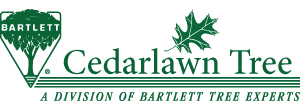Installing New Plants: From Roots to Shoots
Part II – Installation
Welcome back to our ongoing three part discussion on new plant installation and tree planting techniques. In part 1, we discussed some simple steps that can be incorporated into your planning to make the most of your landscape design.
After you’ve carefully considered all the factors in determining which plant suits both your needs and the requirements of the site, it’s time to install your new plant.
Most medium to large caliper woody plants will come in one of three forms of temporary containment.
- The vast majority of trees and larger shrubs will arrive balled-and-burlapped. This means the plant has been dug out of its original growing site and the root ball has been wrapped in burlap to help the ball retain its integrity as well as help retain moisture. Most large root balls will come enclosed in a metallic cage.
- Also popular are container plants. These are plants that are either grown in containers of increasing size their whole lives, or are transplanted to containers to make transportation easier. It is rare for medium to large trees or shrubs to be in containers.
- In a rare case, some very large plant stock will be stored, transported, and planted as a “bare root” plant. These plants are usually carefully excavated by hand to preserve even the most sensitive of fibrous roots. A plant that will be dug and transplanted immediately is usually the best candidate for bare root transplanting.
No matter how the trees & shrubs arrive there are several things to keep in mind when installing the new addition to your landscape design.
- All forms of containment around the root ball must be removed before planting. Metal basket, burlap, twine, or the pot must be removed from the root ball.
Find the root flair
- The root flair is the union between the top soil layer and the functioning root system of the plant. The plant’s stem flairs out because of the natural formation of buttress roots, which act as structural support. At the bottom of the root flair will be the true, natural, root ball. This might take some light excavating and removing soil, but fear not! This step is critical! (NOTE: Some ornamental trees and shrubs are grafted onto root stock to create a specific desirable characteristic like weeping or ‘dwarf’. This is not the root flair!)
Don’t be afraid of the root ball!
- Break that root ball apart! Landscape trees and shrubs are stored in a clay-like soil mix to help the plant retain moisture while in storage. Most plants do not naturally grow in this soil medium, so it’s advised to break as much of this apart as possible to allow the roots to expand beyond the root ball. Seriously, don’t be afraid of harming the root ball. I like to take a trowel and whack away, trying to expose the root system while breaking any roots that have grown perpendicular to the stem (these are called girdling roots if they’re around the stem, or pot-bound if they are on the outside of the root system). These roots will only inhibit the plant later in life, so break them now. In addition, new, young, vigorous roots will sprout from the breaks. Whack away!
Dig your hole!
- After locating the root flair, measure the distance from the base of the root flair to the bottom of the root ball. This will be the depth of the hole. The hole should be roughly 1/3 larger than the diameter of the root ball. Carefully remove the soil from the hole, but keep it nearby. Use the soil you find on site to backfill the hole. Foreign fill can create a physical and chemical barrier between the plant and surrounding growing medium. This barrier will discourage the plant from expanding its roots and will ultimately cause stress and decline.
- Place the plant in the hole and rotate it so the desired face is visible. Start filling the hole in with the excavated soil. As you fill, lightly dampen the soil around and underneath the root ball to eliminate are pockets.
- Once the area around the root ball has been filled in properly, it is best to add approximately two to three inches of well composted mulch. Mulch will help mitigate extremes in soil temperature, reduce weed competition, and help the soil retain moisture.
Guying? Staking?
- When installing new plants, trees in particular, the prevailing knowledge seems to be that they need artificial support. In some cases, with large trees it may be necessary. However, with most plants it can cause more headaches.
Water!
- Water is crucial for new plants! Water by hand 2-3 times a week until the soil is saturated. (NOTE: This does not mean there should be puddles. If the water is puddling, the soil has reached its maximum capacity and you are now overwatering!)
And last, but most importantly, enjoy your new garden shrubs and trees!
This of course is a very basic guide. There are volumes written about the subject. Your local Certified Arborist will be able to answer your questions in more depth and provide deeper insight on how to plant a tree!
In the final installation of this series (pun intended) we will talk about caring for your new plant or plants to ensure they live long, healthy lives.





